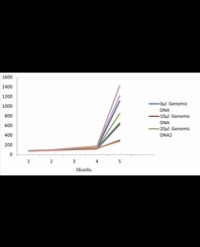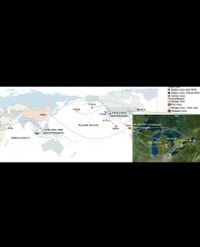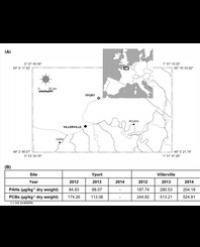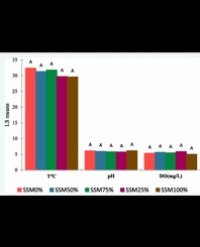
Improvement of Growth Performance of Clarias galmaensis through Hybridization and Genomic DNA from Heterobranchus bidorsalis using Sperm Mediated Gene Transfer Technique
Studies on the improvement of growth performance of Clarias galmaensis through hybridization and genomic DNA from Heterobranchus bidorsalis using sperm mediated gene transfer technique was carried out with the aim of determining the growth performance of Clarias galmaensis treated with genomic DNA and hybridization. Twenty one each of male and female Clarias galmeansis and three each of male and female Heterobranchus bidorsalis were used for the experiment. Female broodstock were induced with ovaprim and kept for latency period, after latency period, one gram (1g) of egg were collected from each fish and fertilized with 1mil of milt collected from the male broodstock. Treatment 1 to 5 involved introduction of genomic DNA of Heterobranchus bidorsalis to the milts at the concentrations of 0, 10, 20, 30 and 40μl before the fertilization while treatment 6 to 8 involved the use of hybridization between Clarias galmaensis and Heterobranchus bidorsalis. After fertilization, the eggs were incubated and raised for 30 days indoors on commercial diets. Thirty (30) fingerlings were selected from each treatment and reared for another four (4) months for growth performance. Data obtained from the research were subjected to analysis of Variance ANOVA. The results shows that the growth performance parameters were better in treatment with ?Female Heterobranchus bidorsalis x ?Male Clarias galmaensis (?Hb x ?Cg) in terms of final mean weight, mean weight gain, mean daily weight gain, percentage weight gain, feed conversion ratio, protein efficiency ratio and percentage survival as 14.26.3g, 1346.7g, 8.86g, 94.38%, 2.07%, 0.50 and 22.43 respectively while final length was higher in breeding combination female and male Clarias galmaensis (Cg x ?Cg) with genomic DNA at 30μl with 1464.7mm. This indicates that Clarias galmeansis can be improved through both hybridization and inclusion of genomic DNA from Heterobranchus bidorsalis.
Mohammed ZB1*, Abdullahi SA2, Dambo A2, Abdullateef AY2 and Ocholi Y3



